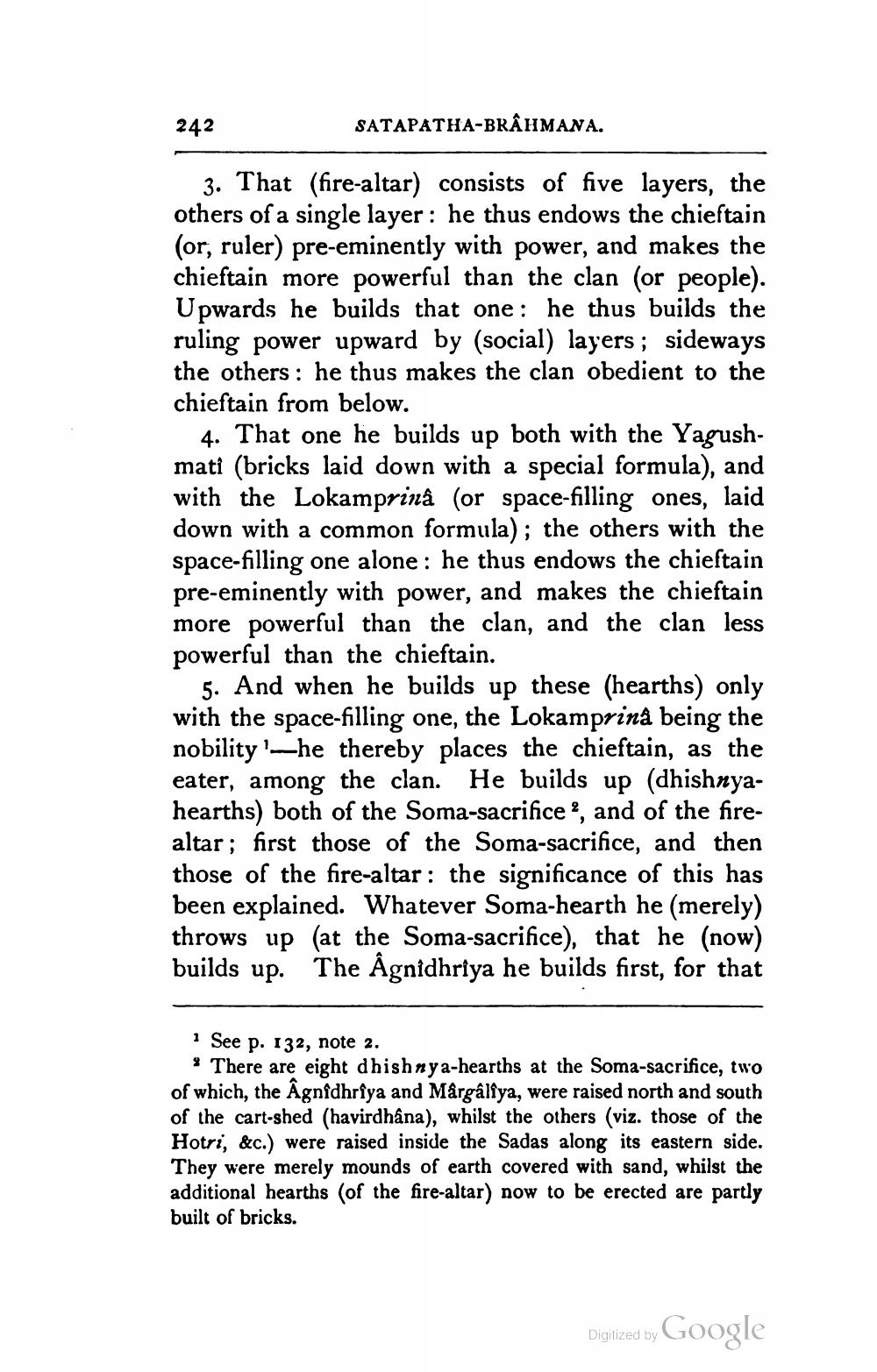________________
242
SATAPATHA-BRAHMANA.
3. That (fire-altar) consists of five layers, the others of a single layer : he thus endows the chieftain (or, ruler) pre-eminently with power, and makes the chieftain more powerful than the clan (or people). Upwards he builds that one: he thus builds the ruling power upward by (social) layers; sideways the others : he thus makes the clan obedient to the chieftain from below.
4. That one he builds up both with the Yagushmati (bricks laid down with a special formula), and with the Lokamprinâ (or space-filling ones, laid down with a common formula); the others with the space-filling one alone: he thus endows the chieftain pre-eminently with power, and makes the chieftain more powerful than the clan, and the clan less powerful than the chieftain.
5. And when he builds up these (hearths) only with the space-filling one, the Lokamprinâ being the nobility '-he thereby places the chieftain, as the eater, among the clan. He builds up (dhishnyahearths) both of the Soma-sacrifice ?, and of the firealtar; first those of the Soma-sacrifice, and then those of the fire-altar : the significance of this has been explained. Whatever Soma-hearth he (merely) throws up (at the Soma-sacrifice), that he (now) builds up. The Âgnidhriya he builds first, for that
1 See p. 132, note 2.
% There are eight dhishnya-hearths at the Soma-sacrifice, two of which, the Agnidhrîya and Mârgâliya, were raised north and south of the cart-shed (havirdhana), whilst the others (viz. those of the Hotri, &c.) were raised inside the Sadas along its eastern side They were merely mounds of earth covered with sand, whilst the additional hearths (of the fire-altar) now to be erected are partly built of bricks.
Digitized by Google




